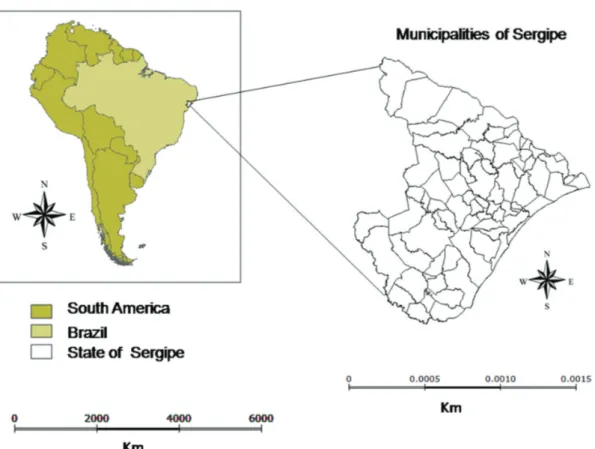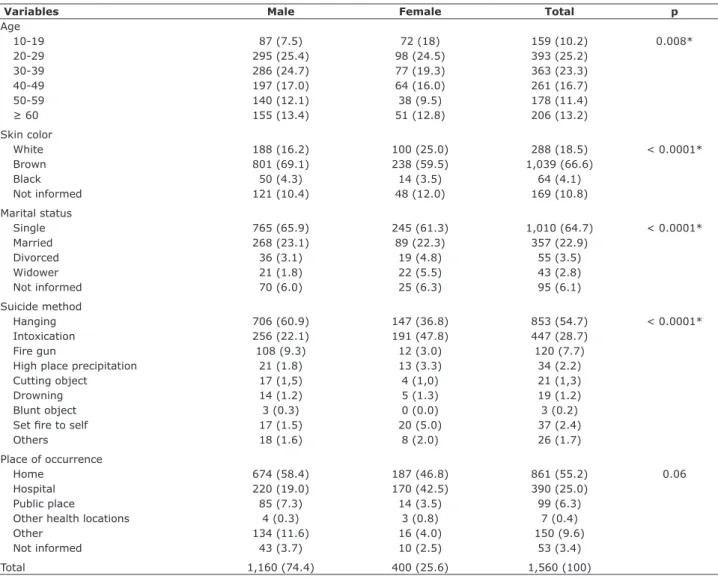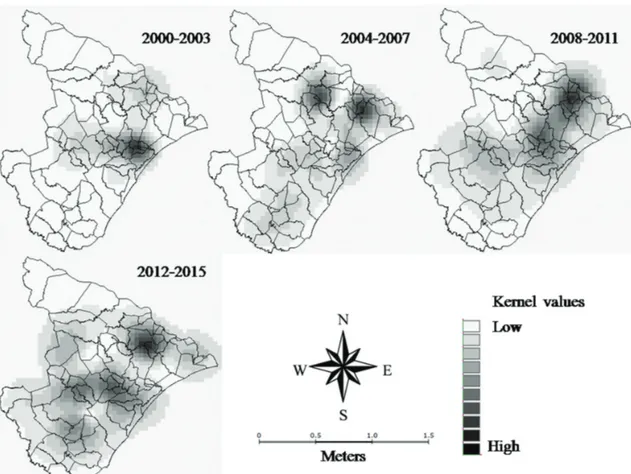Spatial analysis and temporal trends of suicide mortality in Sergipe, Brazil, 2000-2015
Texto
Imagem




Documentos relacionados
Para a realização da etapa de mapeamento das percepções dos especialistas em gestão de riscos corporativos sobre os fatores que mais influenciam no sucesso de inciativas
Ora, potência é medida em unidades de energia por tempo. A figura ao lado representa o processo de descarga de um capacitor como função do tempo.. Ainda de acordo com Einstein,
Abstract This study analyzed the spatial and temporal distribution of cases of visceral leish- maniasis in the State of Maranhão in the peri- od from 2000 to 2009.. Based on
The objec- tive of this study was to investigate trends in mortality from diarrhea among children under 5, tracing seasonality between 1980 and 2000, and to describe spatial
An infection period of 1 to 6 h was selected to study changes in the expression profile as more than 85 % of the infected U937 cells were still viable during this period (Figure
No trabalho acima Ueliton realiza o retrato de Plácido de Castro 34 , nesse trabalho o artista realizou extensa pesquisa em fotografias antigas da cidade de Rio
Assim, descrevemos o processo de elaboração de materiais didáticos interculturais, focados no trabalho com as identidades sociais étnicas, para o ensino de
of this study was to describe the epidemiological profile of human cases reported as HVL in the period from 2006 to 2015 in Pernambuco, to provide evidence in support of